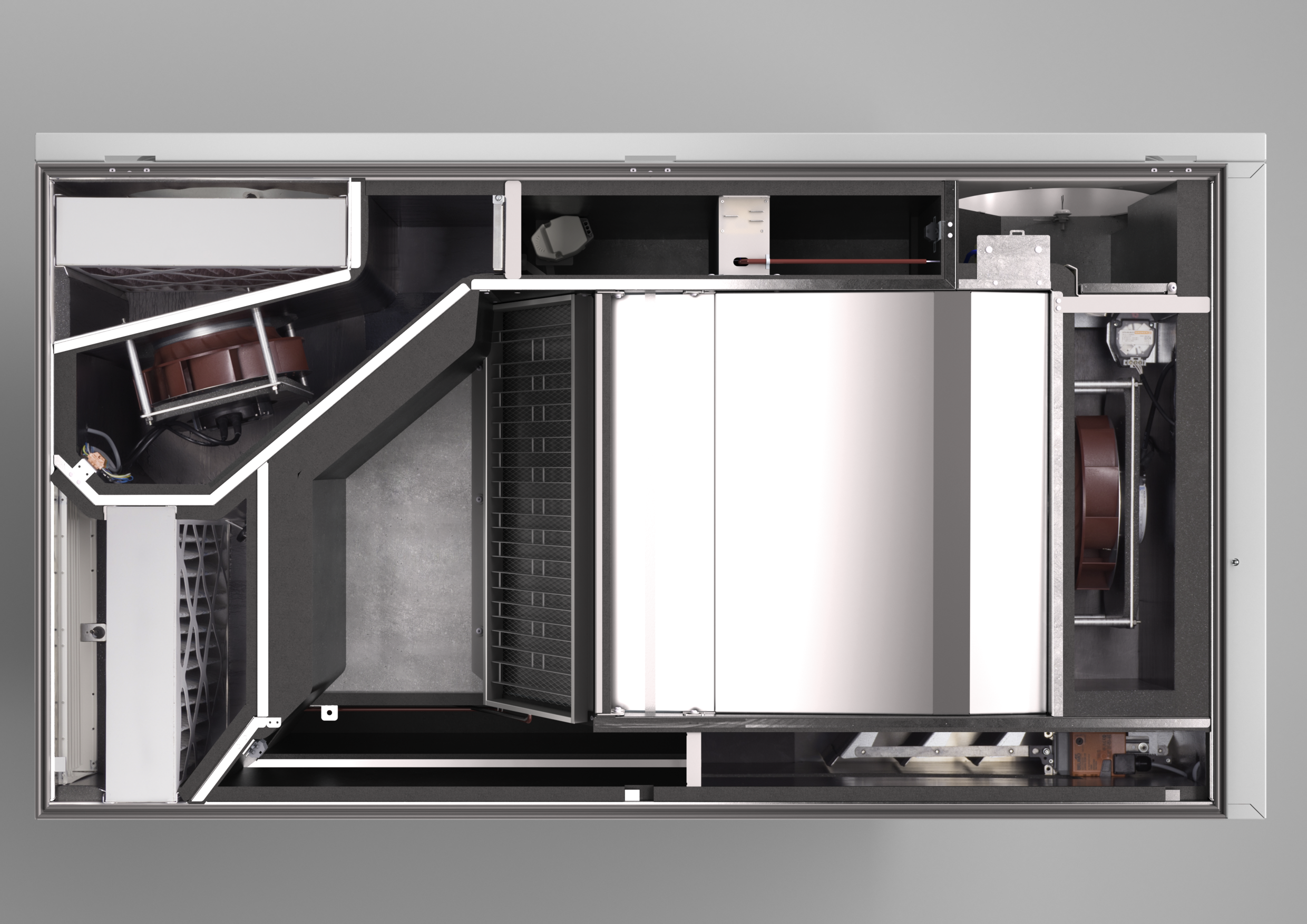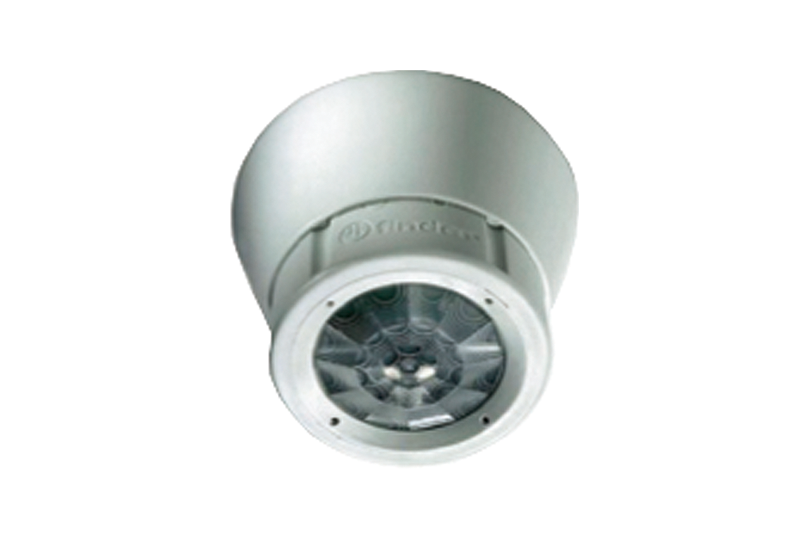




STIEBEL ELTRON VRL-C G Premium Decentralised Heat Recovery Ventilation Systems for Schools, Childcare Centres and Offices

SPECIAL ORDER PRODUCT: Please contact us for delivery timeframe.

Let customers speak for us
Product Overview
- Decentralised ventilation unit with heat recovery for schools, childcare centres, offices and community halls.
- Up to 92% heat recovery.
- Easy installation, even in retrofit projects.
- Additional accessories include CO2 sensor and motion sensor.
Ventilation for Schools, Childcare Centres, Restaurants and Offices
The VRL-C decentralised heat recovery ventilation system recovers up to 92% of the heat that would otherwise be lost through an open window. With decentralised ventilation, the ventilation system is installed where it is needed — directly inside your classroom. Installation is simple and can be implemented quickly. In this way, individual devices ensure optimal ventilation of the entire classroom independently of one another — old air out, fresh and healthy air in.

Product Details
Application
Typical applications are the controlled ventilation of larger rooms such as classrooms, meeting rooms, child-care centres, restaurants and event rooms. Thanks to the integrated filter and heat recovery, the automatic room ventilation improves the air quality in the room and lowers the proportion of CO2, aerosols, spores and dirt. At the same time, the permanent air exchange reduces the pollution of the room air with odours, bacteria and viruses.
The sound-optimised, quiet devices are designed for decentralised use directly in the usage unit. Air ducts are required for the outside and exhaust air. The exhaust air and supply air are distributed directly via the grille outlets on the device.
Convenience Features
Operating modes, programs and parameters can be set easily and intuitively with the control unit. The devices are easy to maintain and designed for quick and easy service. An additional sensor (accessory) measures the CO2 concentration of the room air and regulates the air output of the device fully automatically until the CO2 value falls below the set value again.
The device can be switched to basic ventilation or a higher air level via a motion sensor (accessory). The temperature-controlled bypass enables the heat recovery to be bypassed automatically. The devices are all equipped with an electrical preheater and can also be used at low outside temperatures with balanced supply, and exhaust air volume flows. The systems are equipped with motorised outside and exhaust air flaps to prevent uncontrolled airflow during standstill. In the event of a fire or loss of voltage, the spring-loaded outside and exhaust air flaps close the airways and thus help to minimise the spread of fire and smoke gas in the building. In larger buildings, up to 20 devices can be connected to one another and controlled using just one control unit. The devices are connected to a higher-level building control system using BacNet, Modbus and LON interfaces (accessories).
Efficiency
Energy-saving EC fans, in conjunction with the control and other sensors, enable efficient operation.
Installation
The device is designed for ceiling mounting and can be integrated into a suspended ceiling. It can be installed in different places on the ceiling. The supply air grille, which can be adjusted for flow direction, is located on the front of the device. The exhaust air is extracted through the exhaust air grille on the narrow right-hand side.

Technical Data
VRL-C 300 G Premium
VRL-C 870 G Premium
Up to 92 %
Up to 92 %
137 W (Fan Max)
329 W (Fan Max)
230 V
230 V
100 - 300 m3/h
300 - 870 m3/h
ePM10 = 50% (M5)
ePM10 = 50% (M5)
ePM1 ≥ 50% (F7)
(F9 Optional)
ePM1 ≥ 50% (F7)
(F9 Optional)
200 mm
315 mm
20 mm
20 mm
407 mm
507 mm
585 mm
902 mm
1202 mm
1688 mm
100 kg
140 kg
Accessories





Heat Recovery Ventilation for Commercial Spaces

Heat Recovery Ventilation with Fine Filtration Minimises the Spread of Aerosols
Ventilation has become a constant topic during the COVID-19 pandemic. What was a simple remedy for virus-contaminated aerosols in summer becomes a problem in the colder months.
The solution: heat recovery ventilation ensures fresh and healthy air. Ventilation systems purify the air and reduce the aerosol concentration — reducing fatigue, headaches, dry throat and eyes, asthma and most importantly, the risk of infections.
Easy Installation, Healthy Indoor Air
With decentralised ventilation, the ventilation system is installed where it is needed — directly in your classroom. Installation is simple and can be implemented quickly. In this way, individual devices ensure optimal ventilation of the entire classroom independently of one another — the old air out, and the healthy air in.


The Ventilation Device for Schools, Kindergartens, Restaurants and Offices
The VRL-C decentralised heat recovery ventilation system recovers up to 92% of the heat that would otherwise be lost through an open window. It then transfers this thermal energy to the fresh supply air. That means: In winter, the cosy warmth is retained in the classroom. The virus-contaminated exhaust air is discharged to the outside as exhaust air. The use of the ventilation system is harmless compared to recirculation devices.
The result: Fresh, healthy air - and comfortable temperatures in the classroom.

Easy to Upgrade
A relaxed learning atmosphere at the school is important. A retrofitted ventilation unit ensures that it stays that way under corona conditions.

Ventilation Devices Can Do More
Fresh air for schools, offices, restaurants and day care: The VRL-C ventilation units are also available with a duct connection for installation in the centre of the room.

Benefits of the VRL-C for Your Classroom
- Fresh and healthy air through controlled ventilation.
- Special filter systems for indoor air hygiene.
- Energy-saving ventilation with heat recovery and variable air output (up to a class size of 35 students).
- Healthy room climate through heat and moisture recovery.
VRL-C: The Ventilation Unit for Retrofitting Restaurants and Offices
The VRL-C was specially developed for use in schools and childcare centres as well as restaurants and offices. With an air volume flow of up to 870 m³/h, it reliably ensures an air change that significantly reduces the virus-contaminated aerosol concentration and thus the risk of corona infection.

Regular Air Exchange In the Restaurant
Ventilation systems and ventilation devices have long been in use in many cafés and restaurants. They remove odours and stale air and provide fresh air. Retrofitting is quick and easy.

Employee Protection In the Office
Protect your employees and maintain thermal comfort. Our ventilation solutions are available for a pleasant climate and comfortable temperatures in the workplace.
FAQ
What is an electronically commutated EC motor?
An electronically commutated (EC) motor is designed to run on an alternating current (AC) power supply, but it in fact bears a closer resemblance to a direct current (DC) motor. It is essentially a permanent magnet, brushless DC motor that incorporates on-board electronics. The added electronics allow an EC motor to combine the best features from both AC and DC motors, and then improve on them. For this reason, an EC motor is in a category of its own.
By utilizing this technology, EC fans are highly efficient and pay for themselves through lower operating costs and extended service life. They also provide many operational benefits that are often overlooked.
EC motors use permanent magnets and electrical windings to generate their magnetic fields, in a similar fashion to brushed DC motors. However, as their name suggests, they achieve commutation electronically rather than mechanically. This is only possible by incorporating on-board electronics within the housing of an electronically commutated EC motor.
The on-board electronics include a rectifier that converts the AC supply to DC. An integrated controller then directs the right amount of current, in the right direction, at the right time, through each of the windings. This develops magnetic poles in the stator, which interact with the permanent magnets in the rotor.
The position of each magnet is determined by using Hall effect sensors. The appropriate magnets are attracted, in sequence, to the magnetic poles in the stator. Simultaneously, the rest of the stator windings are charged with the reverse polarity. These attraction and repulsion forces combine to achieve rotation and produce the optimal torque. Since this is all done electronically, precise motor monitoring and control are possible.
What are the advantages of an electronically commutated EC motor?
Energy Efficiency
EC motor efficiency is often above 90%, allowing EC fans to consume up to 70% less energy, when compared to conventional fans. Running an EC fan at 80% speed saves nearly 50% of the energy.
Ease of Control
By continuously monitoring motor functions and automatically adjusting the control input, high efficiency is maintained throughout the operable speed range. EC motors are often capable of being turned down to 20% of full speed, while still maintaining 85% efficiency. Sensors that produce a 0-10V signal provide speed control without the need for a complex variable frequency drive.
Versatility
EC motors are capable of exceeding rated speeds. This allows fans with EC motors to achieve higher capacity within a smaller fan package.
What Makes Fresh Ventilation Different
Fresh Ventilation is a family owned and operated business. Our main business has specialised in the installation of premium quality ventilation systems for over 10 years.
Our focus is on premium products and expert advice to create ventilation systems that actually work.
All of our kits include:
Personal installation maps tailored to your home.
One-on-one conversations to help us understand what is going on and recommend how best to solve it.
One-on-one telephone and/or FaceTime conversations to help you with installing your system.
Installation photos and videos outlining best practices and things to avoid.

